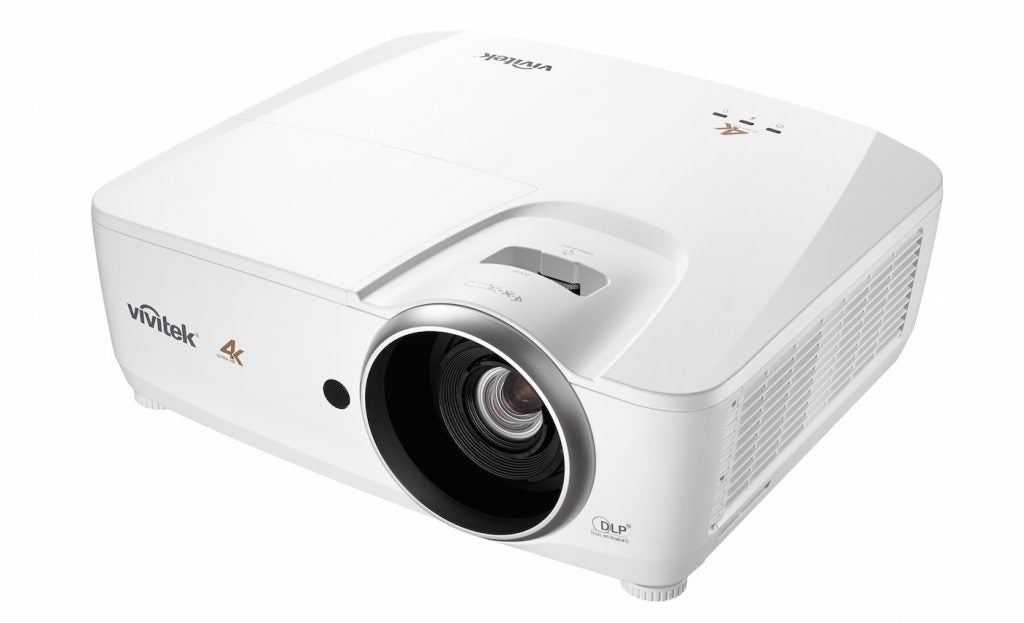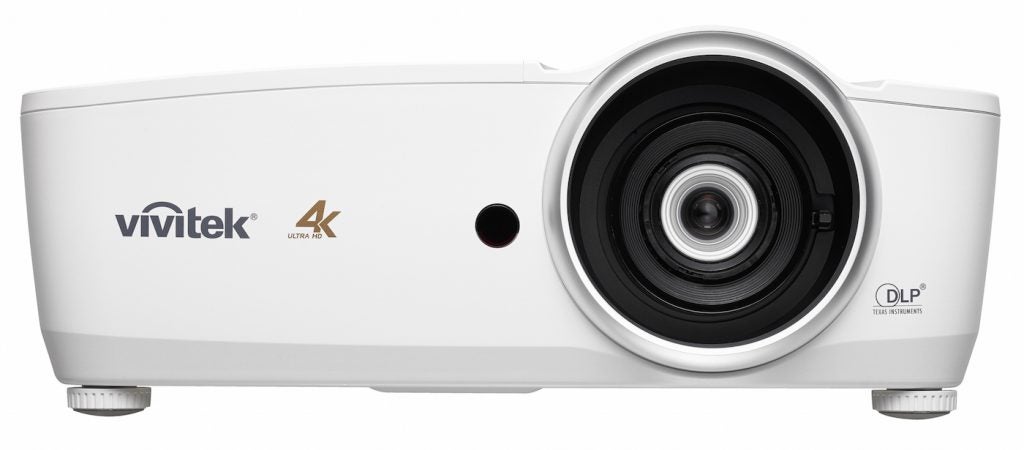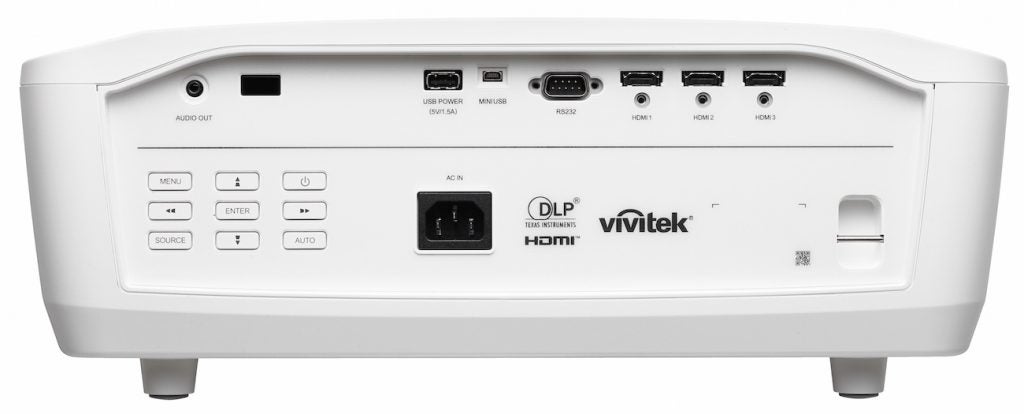Vivitek HK2288 Review
Vivitek HK2288
An affordable 4K projector actually great at HDR
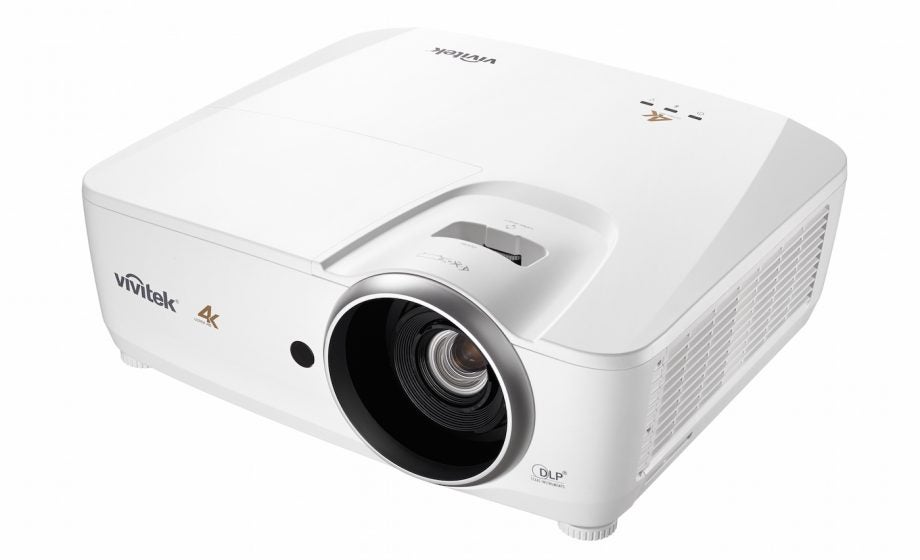
Verdict
Pros
- Impressively consistent and watchable HDR pictures
- Manageable size and attractive design
- Good value for what it offers
Cons
- Clipping with very bright picture areas
- Per-movie adjustment needed for best results
- Runs noisily in HDR mode
Key Specifications
- Review Price: £2499
- Claimed 4K playback
- DLP optical system
- HDR10 support
- Three 18Gbps HDMI ports
- 1.5x optical zoom
What is the Vivitek HK2288?
The Vivitek HK2288 is the latest in a fast-growing line of affordable 4K DLP projectors. In fact, despite costing only £2499, its claimed 4K resolution is supported by HDR playback. This puts it in direct competition with rivals such as the Optoma UHD60, Epson TW9300 and BenQ W1700.
In other words, it’s up against some pretty serious competition. All the more impressive, then, that it holds its own in such esteemed company.
Related: Best Projectors
Vivitek HK2288 – Design and build
Despite the cooling, lens quality and brightness issues associated with delivering HDR projection, the Vivitek HK2288 is a pretty manageable size. At just W430 x D360 x H145mm, it fits comfortably onto a typical projector stand. Or you can pop it on a coffee table and still have room for chips and dips.
It’s cute enough, not to ruin a living room environment. The white finish of my review sample (it’s also available in black) is crisp and clean. Its tapered shape, arching top edge and boldly oversized lens cowling all comfortably sidestep the ugly stick.
Hoisting the Vivitek HK2288 out of its box, I’m reassured by its 9kg weight, which suggests some quality innards. And with this in mind, while the HK2288 may look good in your living room, it’s worth honouring it with a dedicated movie room installation if possible.
The remote control supplied with the HK2288 is a reasonable effort. Its buttons are all brightly backlight for use in a dark room, and its layout is mostly sensible. You even get dedicated buttons for each input.
Vivitek HK2288 – Features
‘True’ 4K projectors such as Sony’s 4K SXRD models carry 8.3 million individual pixels. As with other affordable ‘4K’ DLP projectors, the HK2288 claims to be 4K despite providing only 4.15 million DLP mirrors.
So how can it make such a claim? The key is the way its 2716 x 1528 array of mirrors can be switched more than 9000 times a second. This lets them deliver two discrete pixels per mirror for each frame of the image. These pixels can then be remapped by processing so that your brain sees what is supposedly a 4K image.
Whenever there’s ‘remapping’ processing, there have to be questions over how ‘true’ the resulting 4K resolution truly is. However, the Consumer Technology Association (CTA) in the US has declared the HK2288’s DLP approach genuine 4K. Also, my own experience has consistently shown that DLP’s affordable 4K approach delivers more impressive results than any other ‘pseudo’ 4K system.
The HK2288’s HDR support covers just the industry standard HDR10 format. There’s no support for the upcoming HLG system. I don’t consider this a huge limitation on such an affordable projector, though.
Vivitek claims a maximum brightness of 2000 lumens and a dynamic contrast ratio of 1,000,000:1 for the HK2288. The latter of these two figures is startlingly high, while the first is slightly disappointing. After all, the Optoma UHD60 claims a whole 1000 lumens more – potentially a big deal given the importance of brightness to HDR.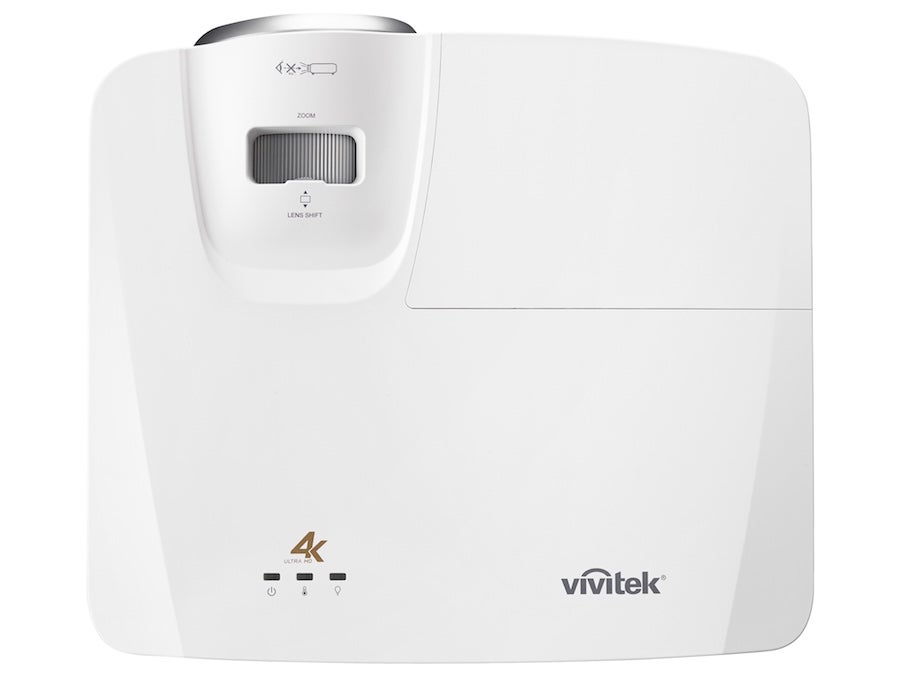
The HK2288’s colour wheel is a six-segment RGBRGB affair. It also carries plenty of gamma and colour management adjustments to optimise it for wide colour space Rec 709 playback. At its heart are Texas Instruments’ DarkChip3 and BrilliantColor technologies for enhanced black levels and colour saturations.
Plus Vivitek claims to be using an advanced video processor offering 12-bit programmable RGB colour adjustments.
Lamp life is quoted at a respectable 4000 hours if you stick with the Dynamic Economy picture mode. Note, though, that this isn’t available when watching HDR.
Vivitek claims a response time for the HK2288 of 50 milliseconds – a figure more or less backed up by my own measurements. However, that the 50ms figure isn’t constant. It’s a rough average of measurements that range between 34ms and 66ms. For gamers, this result is decent but not great.
While you should always try to use an external sound system with a projector, the HK2288 does carry a single 10W speaker for ‘emergencies’.
The projector’s connections are headlined by three HDMIs rather than the more typical two. Even better, all three HDMIs are built to the 4K, HDR-friendly 18Gbps specification. These are joined by a 1.5A USB power socket, an RS-232C control port, and a 3.5mm audio output.
The HDMIs are all claimed to be compatible with HDMI2.0 standards and capable of supporting 10m cable runs, provided you use v2.0-certified cables. This is the first time a projector has claimed such a cable-length feature. Details on how it works have proved elusive, however. All Vivitek could tell me is that it has something to do with the projector’s ‘ITE’ chipset.
Vivitek HK2288 – Setup
The HK2288 is exceptionally easy to install. For starters, its lens features a 1.5x optical zoom that can adapt its images to almost any room size. A wheel tucked into the rear side of the zoom control ‘window’ provides vertical image shift, too. Even the focus lever around the lens delivers more finely attuned control than usual.
Things get trickier once you head into the projector’s menus, though. They’re cumbersome, and neither the Normal nor Detail HDR presets let you adjust their picture settings. You’ll have to select User to tackle out-of-the-box issues such as a greenish hue that hangs over HDR pictures in either of the default picture modes.
You can’t avoid the menus after initial setup, either. Why? Because, frustratingly, different HDR movies benefit substantially from different picture settings.
For instance, while movies mastered in HDR to 1000-nit peaks look okay using the Normal HDR preset (for reasons discussed in the performance section), titles mastered to 4000-nit peaks need the less bright and contrasty HDR Detail setting.
In fact, ideally, these two very different HDR approaches require their own manually tweaked User setups. For instance, with 4000-nit masters, I found brightness and contrast settings of 43 and 46 to give the best all-round image.
Given the difference that tweaking the settings can make to various titles, it’s a shame there’s only one HDR User settings memory.
Having to choose between at least two presets for different titles will require some research into how each title was mastered. While this is a faff, though, the results make the effort worthwhile.
With SDR, the HK2288 is more straightforward. There are more preset options, and the projector delivers satisfying results out of the box.
You don’t have to run the lamp in its brightest Boost mode, either, as you do with HDR. And since the ‘Default’ lamp mode helps the projector run more quietly while improving black levels, I suggest you use it.
The Movie setting with brightness reduced to 51 delivers the best ‘dark room’ SDR experience.
Vivitek HK2288 – Performance
In lots of ways, the HK2288’s pictures come as a very pleasant surprise. Particularly unexpected is the brightness of its pictures in HDR mode. There’s a clear expansion over SDR playback at the bright end of the light spectrum.
This adds genuine sparkle to peak HDR highlights, while also delivering a notably higher average brightness level. Both are pretty major achievements on such an affordable projector.
In fact, I’ve tested far more expensive projectors that don’t deliver HDR with nearly so much impact and punch.
Even more surprisingly, the HK2288 manages to deliver more than a hint of the wider colour gamuts associated with most HDR content. This is partly because that extra brightness unlocks new tones in the brightest parts of the picture. It also seems that the projector really does have extra colour space to play with beyond the usual Rec 709 system.
However, the biggest praise I can give to the HK2288’s HDR pictures is to simply say how consistently enjoyable they are to watch. Once you’ve worked your way round the slight green tint of the HDR picture presets, there’s precious little of the forced look to colours, contrast or brightness that sadly accompanies many projectors’ HDR efforts. Even skin tones look consistently credible and natural, without richer, more artificial tones having to look compromised/excessively reined in.
Even the most common HDR projector issue of silhouetting, where dark objects against bright HDR backgrounds look like mere shadows, only very seldom materialises on this Vivitek.
This all adds up to the HK2288’s HDR pictures enjoying a consistency and stability that’s as rare as hen’s teeth in the projection world. As a result, I had no hesitation about preferring HDR over SDR on the HK2288. A preference that’s actually pretty rare with HDR projectors.
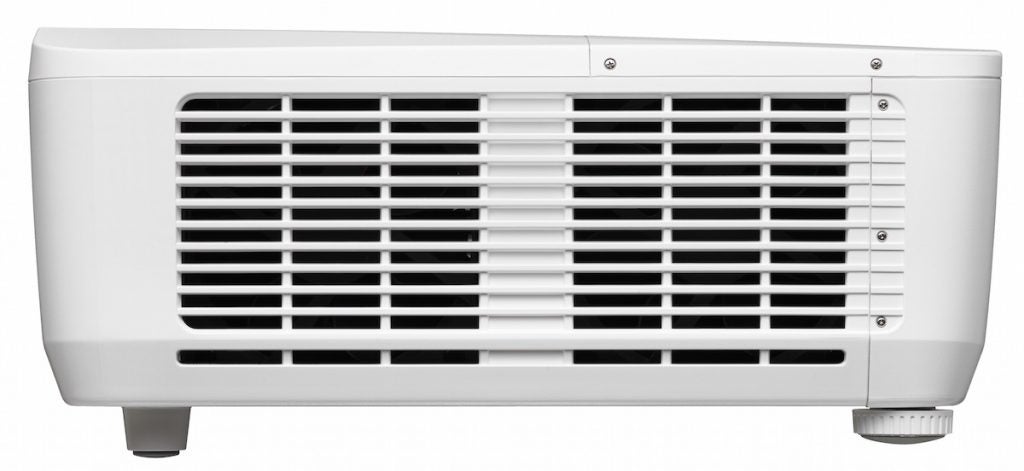
Even some vastly more expensive models – the Sim2 Nero 4 UHD and JVC DLA-Z1, in particular – don’t deliver such consistently engaging HDR images.
Of course, those high-end projectors can look far more spectacular than the HK2288 when a (usually bright) HDR image chimes with their performance ‘sweet spot’. As such, their failings are all the more distractingly apparent when they happen.
I should stress that the HK2288’s HDR pictures don’t have the brightness or black level to rival the explosive HDR dynamics of the best TVs. Dark HDR images can look rather grey, too, due to limitations in the Vivitek HK2288’s black levels. Crucially, the greyness hardly ever feels overwhelming – especially once you’ve reduced the initial green tint.
Also helping keep dark scenes engaging is the HK2288’s ability to retain impressive amounts of shadow detail. As a result, even the darkest scenes on 4K Blu-rays contain a genuine sense of depth and authenticity. More so (at times, anyway) than with rivals such as the Optoma UHD60, Epson TW9300 and £1500 BenQ W1700.
The HK2288’s startling strengths also include images that definitely look 4K. They’re not quite as ultra-crisp as those of Optoma’s UHD60, perhaps. But detailing, pixel density and textures absolutely hit 4K-like levels from reference-grade 4K BDs such as Blade Runner 2049.
In addition, the 4K clarity extends right into the corners of the image better than with most similarly priced rivals.
Vivitek’s debut 4K projector outperforms when it comes to the rainbow effect. This single-chip DLP issue can cause red, green and blue stripes to flit over bright parts of the image. On the HK2288, though, it appears only over really extreme contrast shots. And even then, it’s generally either very fleeting or only visible if you move your eyes over the image.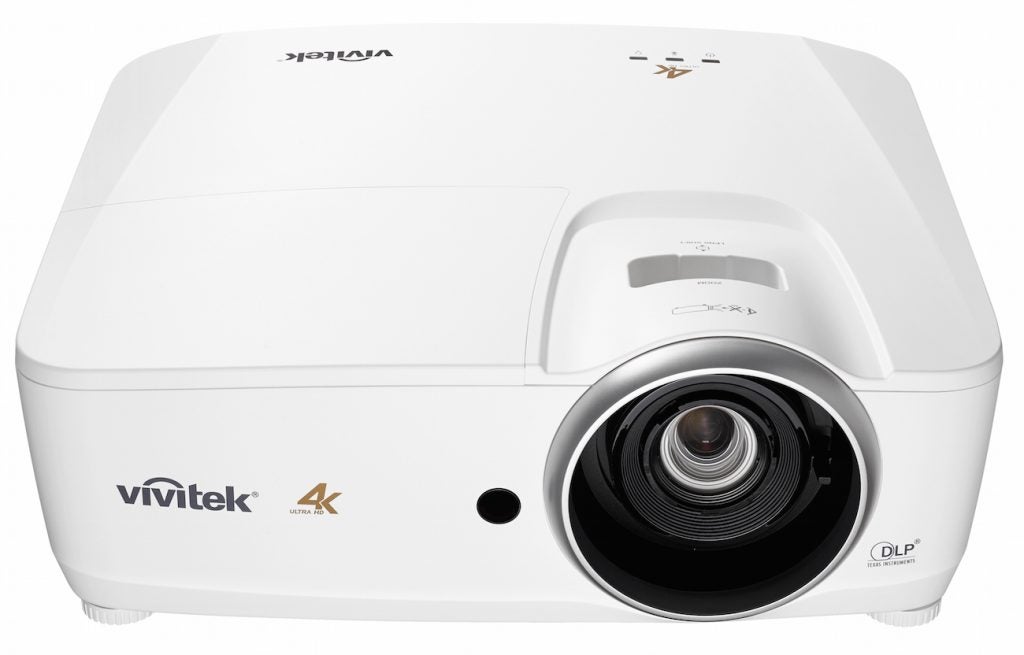
Inevitably, there are a couple of areas where the HK2288’s struggles with HDR. First, it runs quite noisily – around 34dB – when using the HDR-friendly Boost lamp mode. The noise is reasonably smooth, but you’ll still want to sit as far away from the projector as possible.
Second, and worse: very bright HDR picture areas can suffer heavily with ‘clipping’. Or to put in layman’s terms, a loss of detail and subtle colour toning. Using the HDR Normal setting, for instance, the bright skies behind Peter as he arrives in Neverland in Pan look almost pure white. Pretty much all the subtle colouring and cloud detailing that should be there is ‘flared out’.
Similarly, the sun-drenched Iraq battle scenes in Billy Lynn look extremely bleached if you haven’t got the projector optimised for it.
This clipping issue is caused by two factors. First, an inability to hit the same highest brightness levels mastered into the content. Second, inadequate remapping of extreme bright tones to the projector’s brightness capabilities.
Fortunately, the HK2288 does provide tools to at least reduce the clipping, as discussed above. But it’s certainly frustrating that you need to work so hard to keep the issue minimised.
Things are more straightforward with SDR images. Their much narrower light range fits entirely comfortably within the HK2288’s brightness capabilities, meaning there’s no clipping.
Colours from SDR sources look rich but authentic, and contain impressive amounts of the tonal subtleties that separate good HD/SDR images from average ones. As a result, the picture looks strikingly detailed and three-dimensional.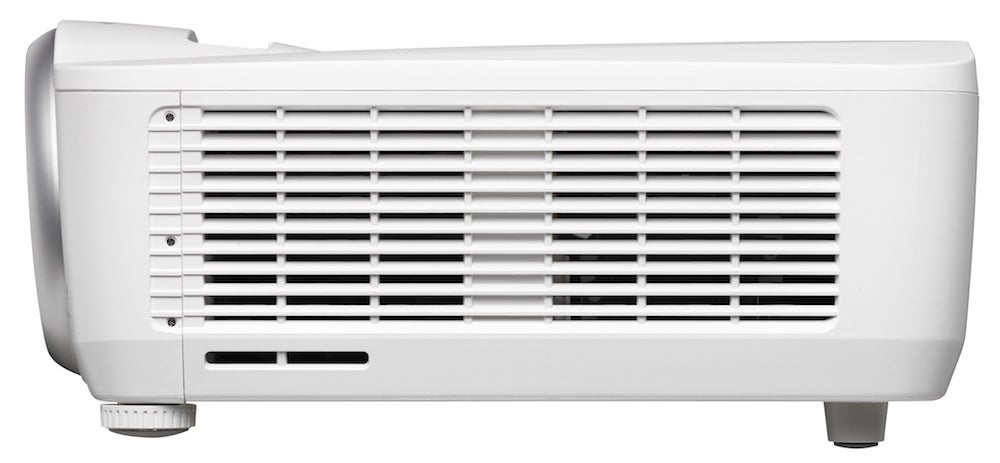
Black levels are a little shallow. Also, as with HDR, using the out-of-the-box settings dark scenes can look a little green. Overall, though, once that green tinge has been dealt with, the HK2288’s SDR pictures are a seriously pleasant watch. Even though I’d always rather watch HDR on this projector where possible.
One last performance point to raise is the HK2288’s built-in speaker. On the plus side, it produces decent clarity and detail. However, its sound doesn’t project well enough to appear even remotely connected to the images on your screen. The fact that it’s only a mono system doesn’t help its lack of scale.
At least the Vivitek HK2288’s default lamp setting for SDR causes much less fan noise to disturb the audio than the HDR-friendly Boost mode does.
Why buy a Vivitek HK2288?
Inevitably for its money, the HK2288 isn’t a perfect projector. It’s a handful to use, too, if you want to consistently get the best from it. The key point is that this ‘best’ is surprisingly good, especially when it comes to HDR playback.
The Optoma UHD60 looks slightly sharper with 4K sources, and provides slightly deeper black levels with SDR. But the Optoma also suffers more with rainbowing and isn’t quite so consistently watchable with HDR.
You could save as much as a grand if you opted for the ground-breaking BenQ W1700 4K HDR projector. But while that model is good for £1500, the HK2288’s HDR pictures are again much more consistently enjoyable.
If you can find another £300 or so, the Epson TW9300 is probably its most compelling HDR rival. Although this projector’s pictures don’t look as convincingly 4K, and its connections are more limited.
Verdict
The Vivitek HK2288 isn’t a perfect performer, then, but it’s more impressively watchable with HDR than any similarly priced rival. Yes, getting the best from it requires a little legwork – but the ends more than justify the means.
Trusted Score
Score in detail
-
Value 9
-
Features 8
-
Image Quality 8
-
Design 8
Features
| Native Aspect Ratio | 16:9 |
| Projector Type | Single-chip DLP |
| Brightness (Lumen) | 2000 Lumens |
| Contrast Ratio | 1,000,000:1 |
| Full HD 1080p | Yes (actually claims 4K) |
| 3D Ready | No |
| Max Diagonal Image Size (Inch) | 325 |
| Min Projection Distance (Foot) | 3.9 |
| Max Projection Distance (Foot) | 32.8 |
| Lamp Type | UHP |
| Lamp power (Watt) | 450 |
A/V Ports
| HDMI | 3 |
Physical Specifications
| Height (Millimeter) | 145 |
| Width (Millimeter) | 430 |
| Depth (Millimeter) | 360 |
| Weight (Gram) | 9000 |

